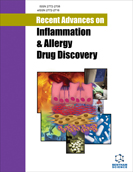Abstract
Advancements in stem cell research have enabled the establishment of three-dimensional (3D) primary cell cultures, known as organoids. These culture systems follow the organization of an in vivo organ, as they enclose the different epithelial cell lines of which it is normally composed. The generation of these 3D cultures has bridged the gap between in vitro models, made up of two-dimensional (2D) cancer cell lines cultures, and in vivo animal models, with major differences regarding human diseases. Organoids are increasingly used as a model to study colonization of gastric mucosa by infectious agents and better understand host-microbe interactions and the molecular events that lead to infection, pathogen-epithelial cells interactions, and mechanisms of gastric mucosal injury. In this review, we will focus on the role of organoids as a tool to investigate molecular interactions of Helicobacter (H.) pylori and Epstein Barr Virus (EBV) and gastric mucosa and how these infections, which affect ≈ 45 % of the world population, might progress to gastric cancer, a highly prevalent cancer and the third leading cause of cancer death.
Keywords: Organoids, Helicobacter pylori, EBV, gastric cancer, infection, host-pathogen interaction.
Graphical Abstract





























